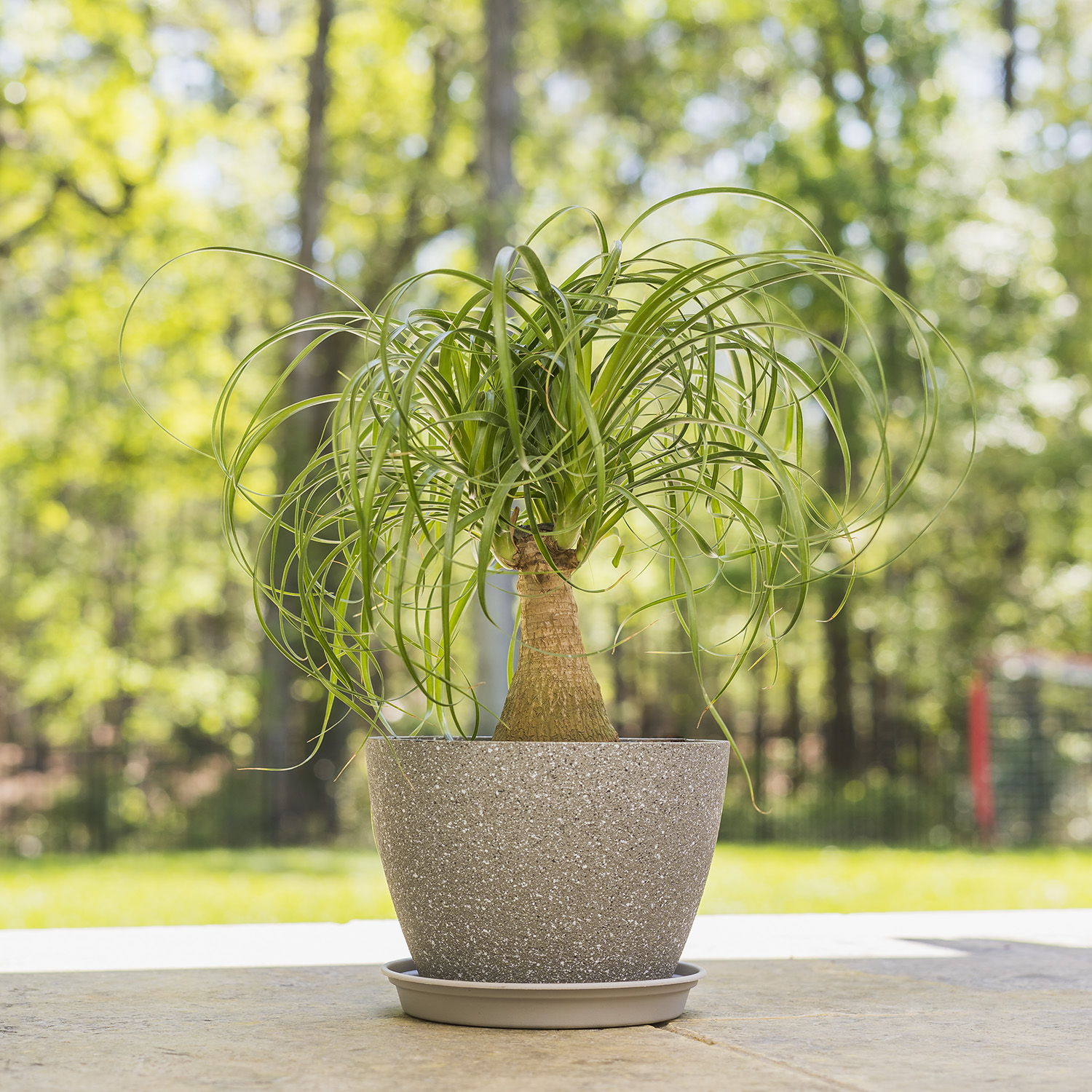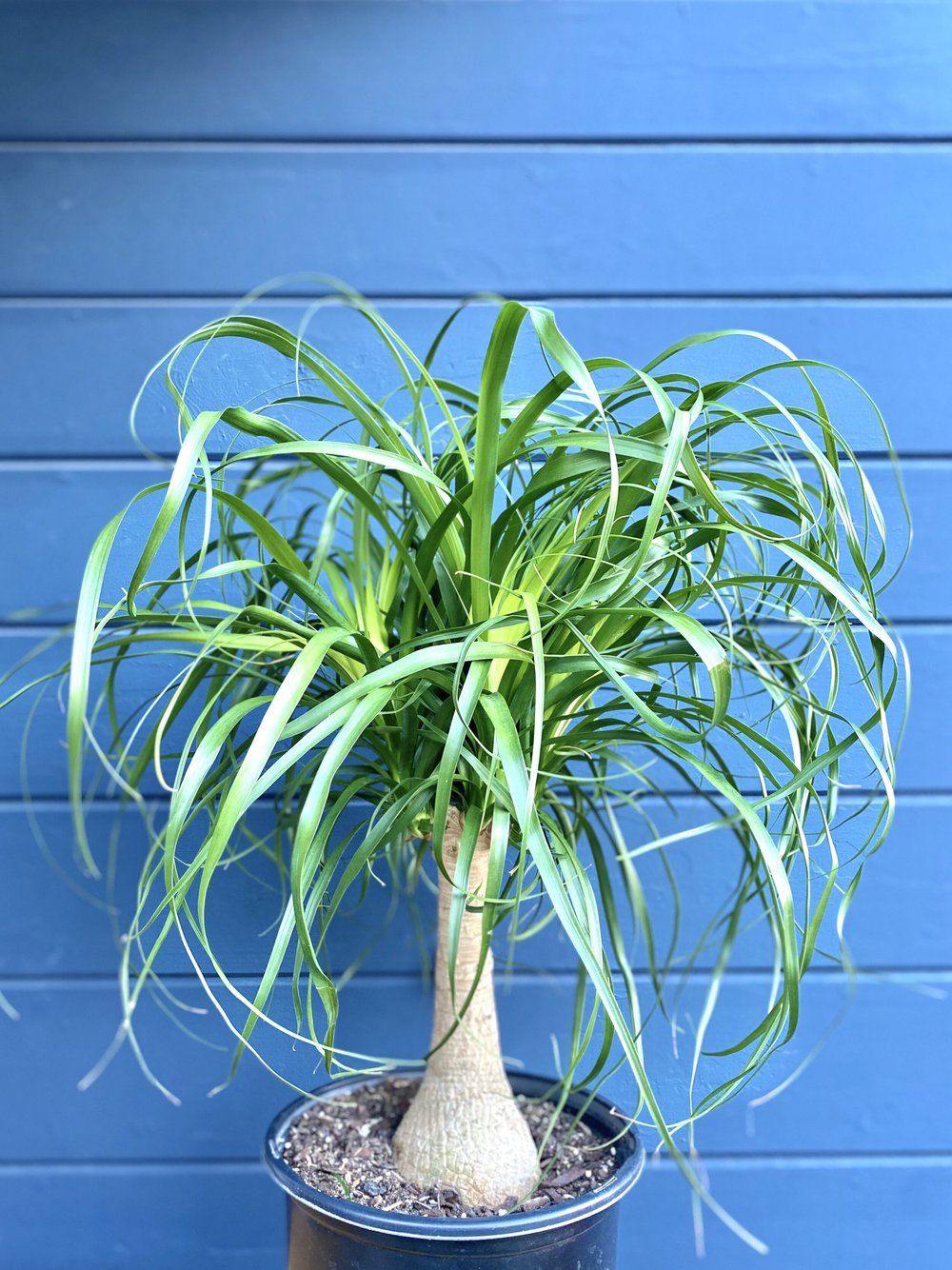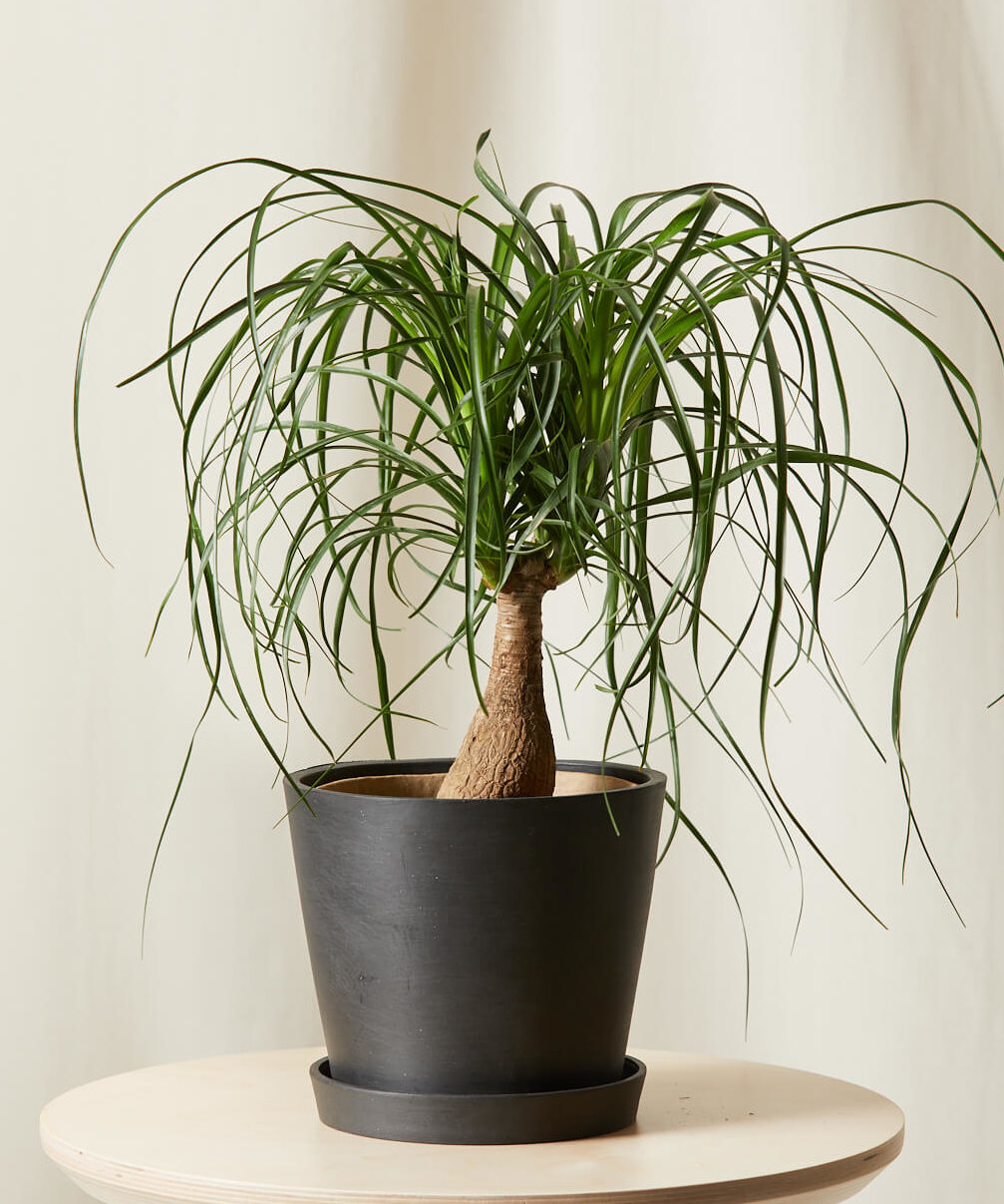The Ponytail Palm, scientifically known as Beaucarnea recurvata, is a popular houseplant renowned for its unique appearance and low-maintenance nature. Its distinctive swollen base, reminiscent of an elephant’s foot, and its long, slender leaves cascading downwards like a ponytail have made it a beloved choice for both novice and experienced plant enthusiasts.
Origin and Habitat

The Ponytail Palm is native to the arid regions of Mexico, where it thrives in harsh, dry conditions. Its bulbous base serves as a water storage organ, allowing it to survive long periods without water. This adaptation makes it an ideal plant for those who frequently forget to water their plants or for those living in dry climates.
Physical Characteristics
The Ponytail Palm is characterized by its:
Swollen Base: The most striking feature of this plant is its bulbous base, which can vary in size depending on the age and health of the plant. This base stores water, allowing the plant to survive during drought.

Caring for Your Ponytail Palm
The Ponytail Palm is a relatively easy-to-care-for plant, making it perfect for busy individuals or those new to plant care. Here are some tips for keeping your Ponytail Palm healthy and thriving:
Bright, Indirect Light: Ponytail Palms thrive in bright, indirect light. A south-facing window is ideal, but they can also tolerate some direct sunlight, especially in the morning or late afternoon.
:strip_icc()/ponytail-palm-plant-95d1052f-5225efca51f94e66b0d1d66bbbe7a997.jpg)
Infrequent Watering: As a succulent, the Ponytail Palm is drought-tolerant and can withstand periods of dryness. Overwatering is a common mistake that can lead to root rot.
Well-Draining Soil: The Ponytail Palm prefers well-draining soil to prevent waterlogging. A cactus or succulent potting mix is ideal.

Warm Temperatures: Ponytail Palms prefer warm temperatures, ideally between 65°F and 75°F (18°C to 24°C).
Minimal Fertilizing: Ponytail Palms are slow-growing plants and do not require frequent fertilization.

Root Rot: Overwatering is the most common cause of root rot. To prevent this, allow the soil to dry out completely between waterings and ensure the pot has adequate drainage.
Seed Propagation: Ponytail Palms can be propagated from seeds, but this is a slow process.
The Ponytail Palm is a versatile and attractive houseplant that can add a touch of exotic beauty to any home or office. With its low-maintenance nature and unique appearance, it is a popular choice for plant enthusiasts of all levels. By following these care tips, you can enjoy the beauty of your Ponytail Palm for years to come.
Ponytail Palm Plant
